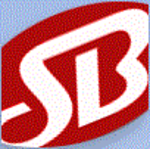Description

Churchhand

Breeze ChMS
Comprehensive Overview: Churchhand vs Breeze ChMS
Churchhand and Breeze ChMS (Church Management Software) are digital solutions designed to streamline church operations and improve engagement. Here's a comprehensive overview:
a) Primary Functions and Target Markets
Churchhand
-
Primary Functions: Churchhand focuses on simplifying administrative tasks for churches. It offers features like membership management, event scheduling, volunteer coordination, and communication tools such as email and SMS. It also includes capabilities for tracking donations and generating reports.
-
Target Markets: Churchhand targets small to medium-sized churches, often focusing on those looking for an affordable and easy-to-use solution. Its simplicity appeals to congregations that may not have a dedicated IT team.
Breeze ChMS
-
Primary Functions: Breeze is known for its user-friendly interface and extensive church management capabilities. Its functions include member management, event scheduling, volunteer and group management, giving and donation tracking, child check-in systems, and robust reporting tools. Breeze also emphasizes integration capabilities with platforms like MailChimp and QuickBooks.
-
Target Markets: Breeze primarily serves small to mid-sized churches but can scale to meet the needs of larger congregations. Its appeal lies in its balance between simplicity and comprehensive features, making it suitable for churches with varying levels of technological proficiency.
b) Market Share and User Base
-
Churchhand: Churchhand is relatively newer and thus holds a smaller share of the market compared to established competitors. It likely has a modest user base focused within regional markets or specific denominations that prioritize cost-effectiveness and base-level functionality.
-
Breeze ChMS: Breeze has a significant presence in the church management software market. It is one of the more popular options for small to mid-sized churches, estimated to serve thousands of congregations across the United States. Its robust feature set and ease of use contribute to a growing and loyal user base.
c) Key Differentiating Factors
-
Ease of Use: Both products are designed with user-friendliness in mind, but Breeze is particularly renowned for its intuitive interface and ease of setup, often cited as one of its strongest selling points.
-
Feature Set: Breeze offers a more comprehensive set of features compared to Churchhand, which is reflected in its wider functionality for member management, event scheduling, and reporting tools. Breeze’s feature set is often more integrated and scalable.
-
Pricing: Churchhand generally targets a lower price point, appealing to church organizations with budget constraints. Breeze, while affordable, may require a slightly higher investment but offers more features.
-
Integration and Scalability: Breeze offers more integration options with third-party platforms, making it appealing for churches that utilize multiple software services. It also provides better scalability for larger organizations compared to Churchhand.
-
Customer Support and Community: Both services place an emphasis on customer support, though Breeze boasts a larger user community that can provide additional peer support and resource sharing.
In conclusion, while both Churchhand and Breeze ChMS focus on improving church administrative functions, they differentiate in terms of market presence, feature depth, and integration capabilities. Churches selecting between these options should consider budget, desired functionalities, and potential growth when choosing a suitable software solution.
Contact Info

Year founded :
Not Available
+1 800-318-6627
Not Available
United States
Not Available

Year founded :
Not Available
Not Available
Not Available
Not Available
Not Available
Feature Similarity Breakdown: Churchhand, Breeze ChMS
Churchhand and Breeze ChMS are both church management software solutions designed to help churches manage their operations, but they come with different sets of features and user experiences. Here's a breakdown of their similarities and differences:
a) Core Features in Common:
- Member Management: Both platforms allow churches to manage member information, track attendance, and handle communications with congregants.
- Event Management: They provide tools to organize, schedule, and manage church events and services.
- Online Giving: Both Churchhand and Breeze ChMS support online donations, allowing members to contribute electronically.
- Communication Tools: Support for email and text communications to keep the congregation informed about church activities and announcements.
- Reporting and Analytics: Both platforms offer reporting features to help church leaders make data-driven decisions.
b) User Interface Comparison:
- Churchhand: Typically, Churchhand may offer a straightforward, minimalistic interface that focuses on ease of use and accessibility. With a design that emphasizes simplicity, it aims to cater to users who may not be technologically inclined.
- Breeze ChMS: Breeze is often noted for its intuitive and sleek user interface, designed to be user-friendly with a modern aesthetic. It focuses on smooth navigation and a visually appealing layout to enhance the user experience for churches of varying sizes.
c) Unique Features:
-
Churchhand:
- Customization: Churchhand may offer more customizable workflows and flexibility in adjusting settings to fit specific church needs, which may appeal to churches looking for a more tailored solution.
- Integration Options: Depending on its design, Churchhand might offer unique integrations with specific tools or platforms that are not available in Breeze.
-
Breeze ChMS:
- Check-In System: Breeze offers a robust check-in system for event attendance tracking, including features like name tag printing, which might not be as developed in Churchhand.
- Volunteer Management: Breeze has strong volunteer management tools, allowing easy scheduling and tracking of volunteer activities.
- Extensive Support Resources: Breeze is known for providing extensive support resources, including tutorials, webinars, and personalized help, which can be particularly beneficial for new users.
Each of these platforms has its strengths and unique selling points, depending on a church's specific needs and operational preferences.
Features

Not Available

Not Available
Best Fit Use Cases: Churchhand, Breeze ChMS
Churchhand and Breeze ChMS are both church management software aimed at helping religious organizations manage their operations more efficiently. Here's an overview of the best fit use cases for each:
Churchhand
a) For what types of businesses or projects is Churchhand the best choice?
Churchhand is specifically designed for smaller to mid-sized churches that require a straightforward and easy-to-use management system without excessive complexity. This software is ideal for:
- Small to Medium-sized Churches: Churches that do not need overly complex features and require simplicity in managing their functions like attendance, membership, events, and communications.
- Churches with Limited Budgets: It caters to organizations looking for affordable solutions without compromising on the essential features necessary for daily church operations.
- Tech-adverse Congregations: Churchhand’s intuitive design makes it accessible for volunteers and staff who may not be tech-savvy, ensuring smoother transitions and daily use.
d) How does Churchhand cater to different industry verticals or company sizes?
Since Churchhand is tailored towards church management, it does not branch out significantly into different industry verticals but instead focuses on providing scalable solutions to accommodate growing congregations within the same vertical. Its simple pricing and features allow it to be accessible to a range of church sizes, primarily those on the smaller side.
Breeze ChMS
b) In what scenarios would Breeze ChMS be the preferred option?
Breeze Church Management Software is more comprehensive, making it suitable for a wider range of church sizes and needs. It is preferred in the following scenarios:
- Medium to Large Churches: Breeze's feature-rich platform can handle the complexity and varied needs of larger congregations, including robust event management, extensive reporting, and customizable forms.
- Multi-campus Churches: Its capabilities to manage and integrate data across multiple locations make it ideal for churches with multiple sites.
- Data-driven Decision Making: Churches that prioritize data analytics and detailed reporting for decision-making will benefit from Breeze’s strong analytical tools.
- Churches in Need of Integration: Organizations that rely on a variety of tools can make use of Breeze's ability to integrate with other applications and services smoothly.
d) How does Breeze ChMS cater to different industry verticals or company sizes?
Breeze ChMS, though focused on the church vertical, provides robust tools that can accommodate larger and more complex congregational structures, allowing it to be versatile for mid-sized to large churches. Its customization and integration capabilities enable it to support larger churches’ affiliate ministries and partner organizations.
In summary, while both Churchhand and Breeze ChMS serve the same primary sector, the choice between them largely depends on the size and specific needs of the church. Churchhand offers a simpler, more affordable solution for smaller churches, while Breeze is suitable for medium to large churches that require a wide range of features and integration capabilities.
Pricing

Pricing Not Available

Pricing Not Available
Metrics History
Metrics History
Comparing undefined across companies
Conclusion & Final Verdict: Churchhand vs Breeze ChMS
When comparing Churchhand and Breeze ChMS, selecting the best overall value depends on several factors, including the specific needs of the church, budget constraints, and the desired features. Here's a comprehensive analysis:
a) Considering all factors, which product offers the best overall value?
Breeze ChMS tends to offer the best overall value for most churches due to its user-friendly interface, wide range of features, and strong customer support. It is particularly beneficial for small to mid-sized churches that need a reliable, all-in-one church management solution without overly complex functionality.
b) Pros and Cons of Each Product
Breeze ChMS
Pros:
- Ease of Use: Known for its intuitive interface, making it easy for volunteers and staff to learn and use.
- Feature-Rich: Includes features like online giving, event management, volunteer scheduling, and a comprehensive database.
- Community and Support: Strong customer support and an active user community.
- Scalability: Can easily accommodate growing churches with changing needs.
- Cloud-Based: Being cloud-based ensures access from anywhere and on any device.
Cons:
- Customization Limitations: While it provides a broad set of features, customization options might be limited compared to more robust systems.
- Pricing: Can become costly for larger churches or those needing extensive user accounts and features.
Churchhand
Pros:
- Affordability: Generally more budget-friendly, appealing to smaller churches or those with financial constraints.
- Focus on Essentials: Offers necessary tools for church management without excessive bells and whistles.
- Simple Setup: Easier and quicker to set up, suitable for churches with limited technical expertise.
Cons:
- Limited Advanced Features: May lack some advanced functionality needed by medium to large churches or those with complex requirements.
- Smaller User Base: Smaller community might mean less frequent updates and limited third-party integrations.
- Potential Growth Limitations: May not fully support significantly growing churches in the long term.
c) Recommendations for Users Trying to Decide Between Churchhand vs Breeze ChMS
-
Assess Specific Needs: Churches should first evaluate their specific requirements, such as the number of members, the necessity for mobile access, and essential features (e.g., donation tracking, event management, member communication).
-
Budget Consideration: Consider the church's budget for software solutions. If cost is a significant factor, Churchhand can be a better fit. However, if the budget allows for higher spend, the comprehensive features of Breeze ChMS might justify the cost.
-
Trial Both Products: Many software providers offer trial periods. Churches should take advantage of trial versions to test out the interface, usability, and features of both products before making a decision.
-
Long-Term Vision: Consider the church's growth plans and potential future needs. Breeze ChMS might be more suitable for churches that anticipate growth or increased complexity in their management tasks.
-
User Feedback: Engage with other churches and user reviews to understand the real-world pros and cons experienced by other users of both systems.
In conclusion, if a church prioritizes comprehensive features and ease of use, Breeze ChMS stands out as a superior choice. However, for budget-conscious churches needing a straightforward tool, Churchhand can be an appealing alternative. Ultimately, the decision should be informed by matching the church's specific needs and future plans with the capabilities and pricing of the respective systems.
Add to compare
Add similar companies




